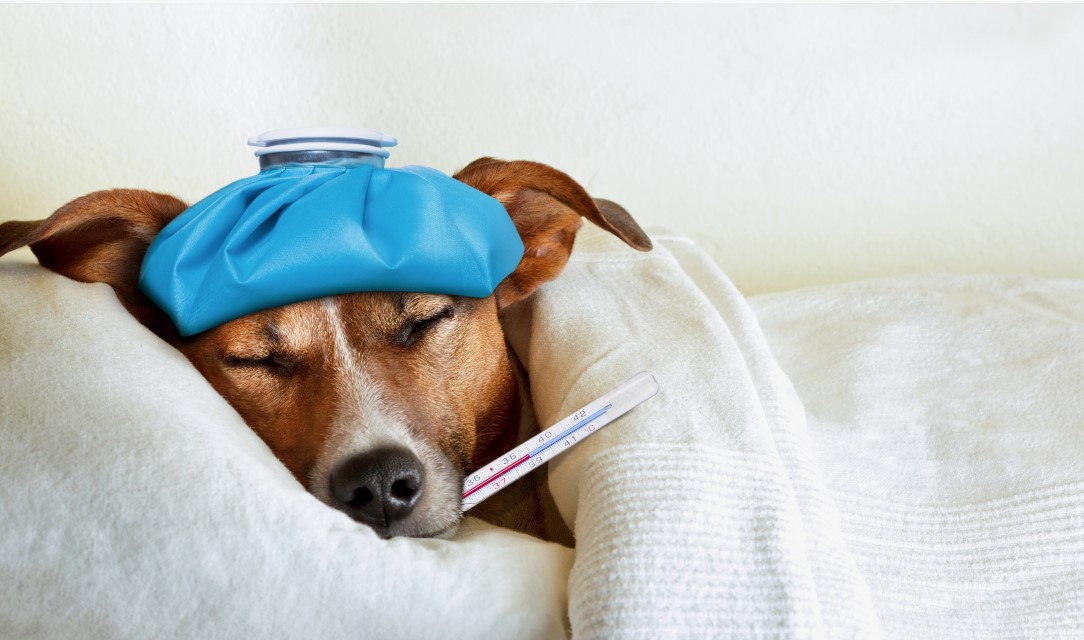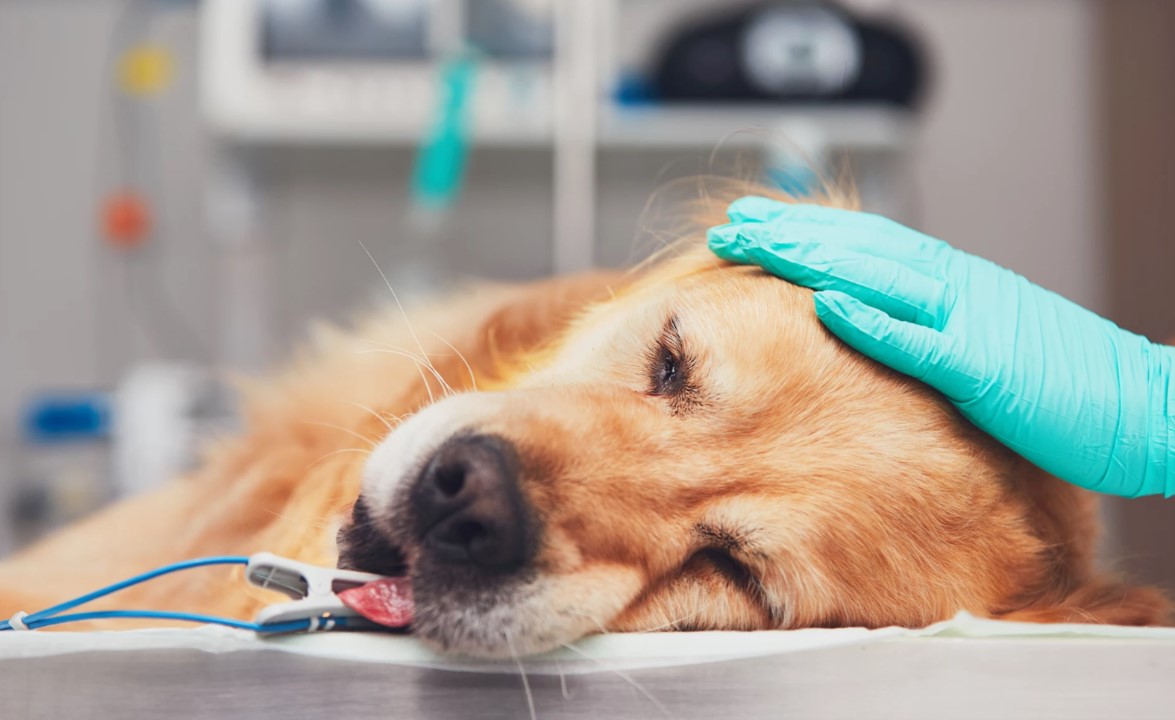Stomatitis in Dogs: Causes, Symptoms, Treatment, and Prevention

Stomatitis is a serious condition that affects the mucous membranes of a dog’s mouth, leading to inflammation, discomfort, and potential complications if left untreated. Characterized by redness, swelling, and sometimes a grayish coating on the affected areas, stomatitis can cause significant distress to a dog and impact their overall well-being. It commonly affects the gums but can also spread to the hard and soft palate, lips, and other areas of the mouth. For expert care and treatment of conditions like stomatitis, The Ark Animal Clinic offers specialized services to ensure your dog’s oral health is maintained.
Causes of Stomatitis in Dogs
The onset of stomatitis in dogs can be triggered by various factors, both internal and external. Some of the primary causes include:
- Oral Trauma
Damage to the oral mucosa caused by coarse food, foreign objects like bone fragments or splinters, or other sharp items that may injure the gums.
- Burns
Consuming hot food or liquids that are too hot can lead to burns on the delicate mucous membrane, causing inflammation.
- Frozen Food
Feeding dogs excessively cold or frozen food can lead to temperature-induced injuries in the mouth.
- Chemical Irritation
The ingestion of caustic chemicals, including certain household cleaners or accidental ingestion of toxic substances, can lead to chemical burns.
- Dental Problems
Conditions such as tartar buildup, periodontal disease, and broken or decayed teeth can irritate the mucous membranes, leading to inflammation. - Gastrointestinal Disorders
Underlying conditions affecting the digestive system may contribute to secondary stomatitis.
- Infectious Diseases
Diseases such as canine distemper can cause secondary stomatitis by weakening the immune system and affecting oral health.

Symptoms of Stomatitis in Dogs
Recognizing the early signs of stomatitis is essential to avoid complications. While the severity of symptoms can vary depending on the stage of the disease, the most common signs include:
- Mild Depression and Lethargy
The constant discomfort caused by the inflammation may make the dog appear fatigued or less energetic than usual.
- Increased Body Temperature
A slight fever may accompany the inflammation.
- Salivation
Excessive drooling, often accompanied by foul-smelling breath, is a common symptom of oral infections like stomatitis.
- Thirst
Dogs may drink more water to soothe the discomfort caused by the inflamed tissue.
- Difficulty Eating
Dogs with stomatitis often chew food slowly and carefully or may refuse food entirely due to pain.
- Redness and Swelling
Upon examination of the oral cavity, noticeable redness and swelling of the gums and other affected areas are evident.
- Ulcers and Blisters
In more advanced stages, blisters filled with clear liquid and ulcers may form on the gums, which may eventually bleed.
- Bleeding Gums
Dogs with severe stomatitis may have bleeding gums, and traces of blood may be seen in their saliva.
- Submandibular Lymph Node Enlargement
As the disease progresses, the lymph nodes beneath the jaw may become swollen.
Consequences of Untreated Stomatitis
Without prompt treatment, stomatitis can lead to severe complications, impacting the dog’s health and quality of life. Some of the potential consequences include:
Difficulty Chewing and Swallowing
The inflammation makes it painful for the dog to eat, potentially leading to a loss of appetite, malnutrition, and weight loss. Weakness and lethargy may result from a lack of proper nutrition.
Increased Risk of Infection
If ulcers or blisters become infected, the risk of more severe conditions like abscesses and sepsis increases.
Tooth Loss
Advanced cases can affect the gums and teeth, leading to tooth loss or other dental complications.
Gangrenous Stomatitis
In severe cases, gangrenous stomatitis may develop, where the mucous membrane tissue begins to die. Symptoms include a foul odor from the mouth, high fever, and enlarged submandibular lymph nodes.
Treatment of Stomatitis in Dogs
Treating stomatitis in dogs typically involves non-invasive approaches aimed at reducing inflammation, eliminating infection, and promoting healing. The treatment plan usually includes:
- Oral Rinsing: The dog’s mouth is rinsed with antiseptic solutions several times a day to control bacterial growth and aid healing. Solutions like chlorhexidine or metronidazole-based gels are often used for their anti-inflammatory and bactericidal properties.
- Topical Medications: In cases of extensive lesions, potent medications may be applied directly to the ulcers. These medications are applied cautiously to ensure they only target the affected areas without irritating healthy tissue.
- Antibiotics: If the stomatitis is caused by or has led to a bacterial infection, antibiotics may be prescribed by the veterinarian to combat the infection and prevent further complications.
- Pain Management: For severe cases, pain relief medications may be recommended to reduce discomfort and help the dog resume normal eating behaviors.
- Dietary Changes: During the recovery period, the dog’s diet is modified to include soft, warm, and homogenous food that will not further irritate the inflamed areas. This makes it easier for the dog to eat without causing additional pain or injury.

Preventing Stomatitis in Dogs
Prevention plays a critical role in avoiding recurrent or chronic cases of stomatitis in dogs. Key preventive measures include:
- Regular Oral Hygiene
Routine brushing of the dog’s teeth with a dog-safe toothpaste helps prevent plaque buildup, tartar formation, and gum disease. Dental chews or treats designed to promote oral health can also be beneficial.
- Routine Dental Checkups
Regular visits to the veterinarian for dental checkups can help identify early signs of oral issues, ensuring prompt treatment.
- Appropriate Food Temperature
Ensure that the dog’s food is served at a moderate temperature—neither too hot nor too cold—to prevent thermal injuries to the mouth.
- Avoiding Hard or Sharp Objects
Providing soft, appropriate chew toys and avoiding giving the dog bones or hard treats that could injure the gums or teeth.
- Monitor Health
Maintaining the overall health of your dog by addressing any underlying medical conditions, such as gastrointestinal issues, can reduce the likelihood of secondary stomatitis developing.
Primary and Secondary Stomatitis
There are two main types of stomatitis: primary stomatitis and secondary stomatitis.
🡪Primary stomatitis occurs as a direct result of mucosal injuries or oral trauma, such as from eating sharp bone fragments, tartar buildup, burns, or chemical exposure.
🡪Secondary stomatitis develops as a complication of other health conditions, such as metabolic disorders, weakened immunity due to infectious diseases, diabetes, or old age.
Both types require different approaches to treatment, but the key to success lies in timely diagnosis and prevention of complications.
Conclusion
Stomatitis in dogs is a potentially debilitating condition that requires prompt and effective treatment. By understanding the causes, recognizing the symptoms, and taking preventive measures, dog owners can ensure their pets’ oral health is maintained, avoiding the discomfort and complications associated with stomatitis. Regular veterinary checkups, good oral hygiene practices, and careful attention to the dog’s diet and health can significantly reduce the risk of this painful condition.
For expert dental care, consider seeking professional services like those offered by The Ark Animal Clinic in Dubai, where your dog’s oral health is a top priority. From routine cleanings to complex treatments, they provide the highest quality care to keep your furry companion healthy and happy.
Biker, shiba-inu lover, guitarist, Swiss design-head and multidisciplinary designer. Performing at the fulcrum of aesthetics and programing to create not just a logo, but a feeling. Let’s design a world that’s thoughtful, considered and aesthetically pleasing.

